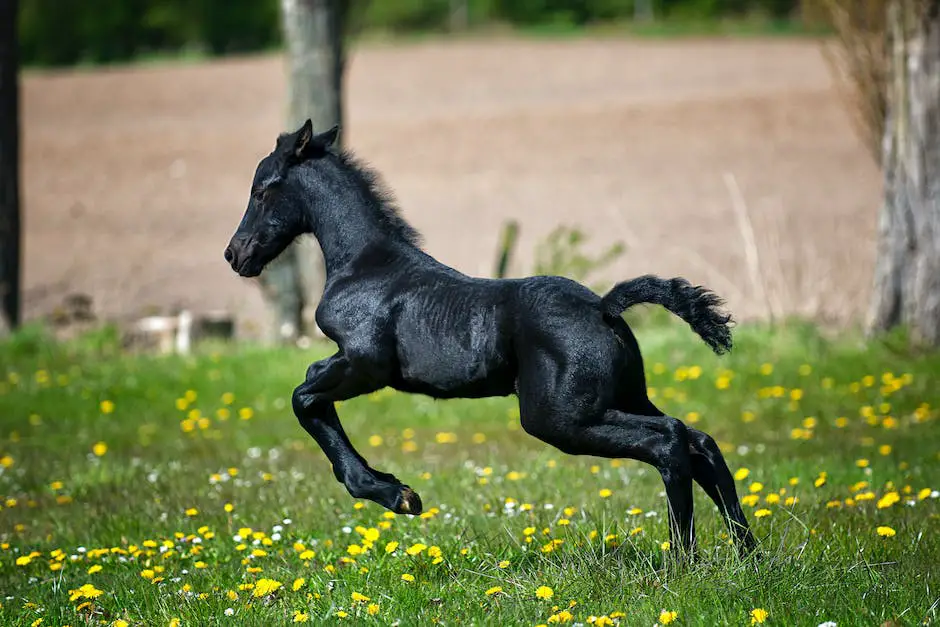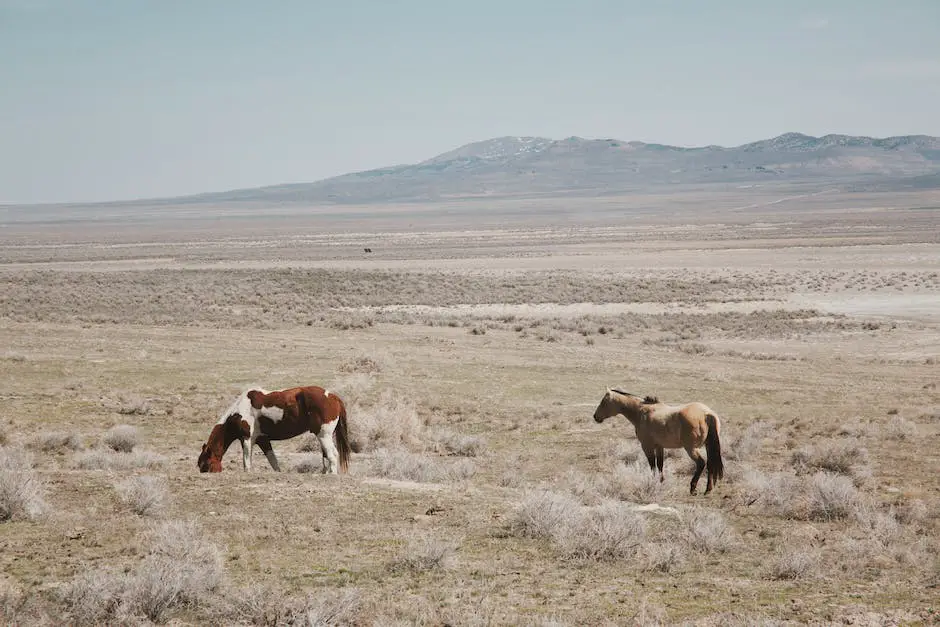In the realm of equine history, German breeds present a compelling narrative that blends ancient traditions, selective breeding principles, and intricate relationships with human society at large. Starting from their early origins to the breed-specific histories, these noble creatures have been meticulously shaped by years of craftsmanship, cultural influences, and historical events. These breeds, such as the notable Hanoverian, the robust Holsteiner, and the elegant Trakehner, have carved their identities in the equine world with their distinct traits, unrivaled performance, and adaptability in varying roles.
Table of Contents (Horspedia)
Origin and Early History of German Horse Breeds
Original Horse Breeds and Interbreeding Influence
While domesticated horses have been present in what is now modern-day Germany since approximately 3000 BC, it was around the time of the Middle Ages when the breeding of horses became more organized. Those horses, primarily used for agricultural work and warfare, were generally heavy and large. Over the centuries, numerous German provinces began to develop their own breeds, suited to the area’s specific needs and environmental conditions.
Interbreeding with horses from the Middle East and Spain had a profound impact on German horse breeds. In the 16th and 17th centuries, German breeders introduced Arabian and Andalusian horses into their lines to improve strength, endurance, and temperament. This resulted in the emergence of new breeds and improved the overall quality of German horses.
Impact of War and Technological Progress on Horse Breeds
The requirement for horses also shifted dramatically during war periods, encouraging the development of certain breeds. For instance, during the 19th century wars, demand grew for agile horses capable of pulling artillery, leading to the formation of the East Prussian, Hanoverian, and Holsteiner breeds.
However, with the advent of the industrial revolution and advancements in transportation, draft horses in Germany experienced a significant decrease in demand. Breeders shifted their focus from the production of heavy working breeds to riding horses and sports horses, thus influencing the evolution of the breeds.
Popular German Horse Breeds and their Background
Germany is known for breeding some of the world’s finest sport horses. Among them, the Hanoverian, Holsteiner, and Trakehner breeds are the most renowned.
The Hanoverian horses, originating in the early 1700s from the region of Hannover, were initially carriage and military horses. Eventually, through selective breeding practices, they evolved into today’s ideal sport horses known for jump and dressage.
Trakehners originated in the former East Prussian state. The breed was developed by crossing local East Prussian horses with Thoroughbred and Arabian bloodlines, leading to a versatile horse, known for speed, endurance, and agility.
Holsteiners are among the oldest German breeds, tracing their history back to the 13th century. Initially, these breeds were used as working horses, but over time, they’ve been refined into one of the top sport horses globally, renowned for their jumping ability.
Damage Control Post World War II
World War II left a detrimental impact on German horse breeds as the conflict led to the loss of significant numbers of horses. After the war, survival became crucial, and breeders sought to develop horses that were suitable for a wider range of uses, leading to the further development of versatile breeds like the Warmbloods. The post-war period witnessed the rise of performance testing, emphasizing strength, temperament, and suitability for various riding disciplines.
Present-day Snapshot
In the contemporary equestrian sphere, several German horse breeds have cemented their places in the spotlight of international horse sports events. German breeds including Hanoverian, Holsteiner, and Trakehner horses often secure top spots in Olympic equestrian competitions. Westphalian, Oldenburg, and Hanoverian horses are also frequently seen succeeding in disciplines like dressage and show jumping. The innate emphasis on maintaining breed purity and adhering to strict performance guidelines have upheld Germany’s esteemed reputation for breeding and nurturing some of the world’s most exemplary horse breeds.

Famous German Horse Breeds and their Characteristics
Hanoverian Horse Breed
Originating from Germany’s Lower Saxony region in the late 1730s, the Hanoverian breed is acclaimed for its strength, elegance, and adaptability. By interbreeding native mares with Thoroughbreds and Holstein horses, a versatile, high-performance breed was cultivated. The Hanoverian horses impress with their extraordinary athletic prowess, shining in realms of dressage, show jumping, and eventing. Their serene disposition is an added virtue, making them well-suited to pleasure riding as well.
Holsteiner Horse Breed
The Holsteiner breed is one of the oldest warmblood breeds, having a history that dates back to the 13th century. Notably, this breed originated in the Schleswig-Holstein region of Germany and has been improved throughout the centuries through strategic breeding with Thoroughbred, Anglo-Norman, and Cleveland Bay horses. Today, the Holsteiner is particularly famous for show jumping, highlighting its agility, speed, and great power. They often possess a strong temperament, requiring experienced handlers.
Trakehner Horse Breed
The Trakehner breed hails from the former East Prussian province of Germany. This breed’s inception in the 18th century was a result of crossing local East Prussian stock with Thoroughbred and Arabian horses. The resulting breed was a hardy yet surprisingly elegant war horse. Over time, the Trakehner has evolved into an excellent sport horse known for its stamina, intelligence, and willingness to work, often prevailing in disciplines like eventing and dressage.
Westphalian Horse Breed
The Westphalian breed, established in the Westphalia region of Germany in the early 19th century, has a lineage that links back to the Hanoverian, Thoroughbred, and Anglo-Arabian horses. Like other German breeds, the Westphalian breed was initially developed as a working horse, but it has emerged as an acclaimed performance horse. These horses have a keen aptitude for dressage, show jumping, and competitive driving, characterized by their strength, agility, and brilliant movement.
Oldenburg Horse Breed
Finally, the Oldenburg horse — originating from the Lower Saxony region similar to the Hanoverian breed. This breed underwent significant transformation during the late 19th century after a concerted effort to produce sophisticated carriage horses. Notably, more recent breeding has emphasized the development of high-performance dressage and show jumping horses. Therefore, today’s Oldenburgs showcase a unique blend of power and elegance, with large, expressive movement, making them particularly suited for dressage.
Renowned for breeding horses that showcase exceptional versatility and performance capabilities, Germany has given rise to a number of superior equine breeds, which include the Hanoverian and the Oldenburg. German horse breeders, known for their painstaking and methodical breeding methods, have cultivated strains that excel in diverse spheres, such as dressage, show jumping and carriage driving. As a result, they offer an excellent range of choices for both competition-focused and recreational riders.

The Impact of German Horse Breeds in Global Equine World
How German horse breeds have influenced the world of equine sports
These German horse breeds occupy a significant position in the global context of the equine world. Originating from a country that is renowned for its rich equestrian culture, these breeds stand out in a variety of disciplines, which include sports, agriculture, and companionship. They often shine on the world’s biggest stage, the Olympics, establishing new competitive records in dressage, jumping, and eventing – a triathlon of horse sports that combines dressage, cross-country, and stadium jumping.
Among the most renowned German horse breeds is the Hanoverian
Known for their strength, speed, and intelligence, Hanoverians have not only excelled in sports disciplines but have also played a significant role in labor, particularly in agriculture. Ranging from pulling ploughs and carriages to even serving in military roles, these horses added notable value in activities requiring equine strength and endurance.
The Oldenburg: German Horse Breeds’ International Presence
The Oldenburg is another breed that has carried the German flag in the international equestrian scene. This warmblood is mainly used in dressage and show jumping. The Oldenburg and the Hanoverian, both of noble lineage, have been crossbred with English and French horses, which has significantly contributed to their prominence in equestrian sports.
Promotion and Preservation of German Horse Breeds
Germans have been exceptionally meticulous and structured in their approach to breeding horses, ensuring the preservation and continued excellence of their breeds. The various breed registries in Germany such as Hanoverian Society, Holsteiner Verband, and the Oldenburg International have comprehensive studbooks, strict selection criteria for breeding horses, and stringent performance testing for mares and stallions. These organizations not only maintain the purity and quality of German horse breeds but also ensure their promotion through local and international breeding programs.
International Showcases: Promoting German Horse Breeds
Another way German horse breeds are preserved and promoted is through international horse shows and auctions. Germany, being known for its equestrian culture, hosts some of the prestigious horse events in the world. Horses of notable breeds participate in these events, getting the opportunity to be showcased to a global audience. These events help promote German horse breeds by providing them international exposure and highlighting their capabilities in different disciplines.
Contributions to Global Equine Genetics
German horse breeds’ overall impact can also be seen in the global genetic pool of horses. Besides their achievements in various fields, these breeds play an instrumental role in the improvement of horse gene pools worldwide. Crossbreeding German breeds with those from other nations has often resulted in hybrids with enhanced abilities, benefiting the global horse breeding industry.
For instance, the Thoroughbred, a breed originally from England, has been widely crossbred with the Hanoverian and the Holsteiner to create a line of robust sport horses. Meanwhile, the Trakehner, a breed known for its extraordinary endurance and versatility, is often mixed with Siberian and Oriental breeds, resulting in horses aptly-suited for colder climates.
In Conclusion: The Enduring Legacy of German Horse Breeds
In essence, German horse breeds have carved out a prominent place in the global equine world with their remarkable contributions and achievements in sports, agricultural work, and genetic enhancement. Their preservation and promotion continue to assure their enduring legacy, benefiting the future generations of horse breeds worldwide.

Looking into the broader perspective, the influence of German horse breeds extends far beyond the borders of their homeland, making a significant impact on the global equine landscape. In areas like sport, agriculture, and companionship, their contributions are uniformly recognized. Such noteworthy reputation underscores the importance of preservation and promotion of these breeds for future generations, ensuring that their lineage continues to inspire, contribute, and shape the ever-evolving narrative of horse breeding and equestrian sports worldwide.

